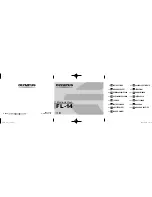
22
Kuro sCMOS Camera System Manual
Issue 2
5.2
Gain Combining
Section 5.1, CMOS Image Sensor Structure
, the column ADCs present in
sCMOS devices have limited dynamic range. This is addressed by making two
measurements of the accumulated charge in each pixel:
•
The first measurement is made with very high sensitivity but is limited to a
maximum signal of approximately 4000 electrons;
•
The second measurement is made with reduced sensitivity but is capable of
measuring signals up to the pixel's 80,000 electron full-well capacity.
Combining the two measurements into a single 16-bit value is the function of the digital
“gain combiner.” This mathematical operation is performed on the camera’s FPGA. The
result is a single 1x gain of approximately 0.45e/ADU.
In practice, Kuro's advanced FPGA based signal processing does an excellent job of gain
combining as evidenced by the quality of gamma transfer functions (linearity) and
photon transfer functions (signal versus noise.) With careful observation and uniform
illumination of the sensor, the zone where two measurements overlap can be seen as a
slight static vertical pattern in the image. This is inherent on all current generation
sCMOS cameras. While impacting image quality, these cannot be addressed without
negatively impacting image photometry and wait for further improvements to the
on-sensor ADC conversion.
5.3
Rolling and Global Shutter Readout
CMOS image sensors support two shutter readout modes:
•
Global Shutter Readout [Not currently supported by Kuro]
In this mode, a global charge clearing mechanism begins the exposure period
for all pixels. Each pixel accumulates signal charge until the exposure period
ends. At this point, the accumulated charge is transferred and converted to a
voltage in the pixel’s output node, ending the exposure.
The strength of the Global Shutter approach is that all pixels are exposed at the
same instant in time, an important attribute when imaging fast moving objects.
The downside of this approach is the sensor has two phases, an active image
accumulation phase, and a subsequent readout phase. As the phases are not
overlapped in time, the maximum achievable frame rate is lower.
•
Rolling Shutter Readout
In this mode, exposure and readout are overlapped. This is accomplished by
reading one row while exposing all of the other rows. (The row being digitized
“rolls” through the sensor.)
For Kuro, the time to digitize a single row is 20
s, and consequently the delay
between the start of exposure between two adjacent rows is approximately
9.6
s. When digitizing 1200 rows of pixels, the time delay from the top to the
middle of the sensor is approximately 24 ms. Since readout and exposure are
overlapped, the sensor achieves the maximum frame rate of 41 fps.
In 12-bit mode, because two rows are read out simultaneously, the row time is
effectively cut in half to 10
s, thus increasing the maximum frame rate to
82 fps.
Summary of Contents for Kuro
Page 1: ...www princetoninstruments com Kuro sCMOS Camera System Manual 4411 0159 Issue 2 March 28 2019...
Page 6: ...6 Kuro sCMOS Camera System Manual Issue 2 This page is intentionally blank...
Page 18: ...18 Kuro sCMOS Camera System Manual Issue 2 This page is intentionally blank...
Page 24: ...24 Kuro sCMOS Camera System Manual Issue 2 This page is intentionally blank...
Page 34: ...34 Kuro sCMOS Camera System Manual Issue 2 This page is intentionally blank...
Page 42: ...42 Kuro sCMOS Camera System Manual Issue 2 This page is intentionally blank...
















































